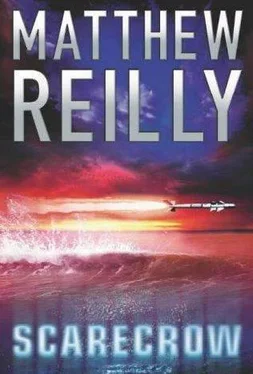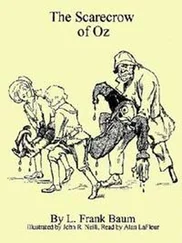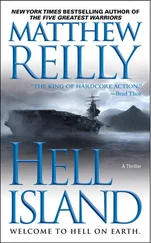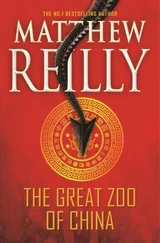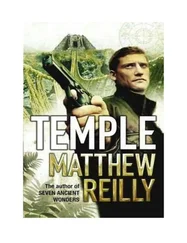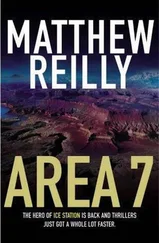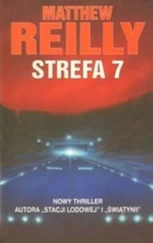'Thank you, Captain,' Schofield said softly. 'Okay, Rufus. Let's rock.'
Speed.
Pure, unadulterated speed. 7,000 km/h is about 2,000 metres per second. Seven times supersonic is super super fast.
The two X-15s ripped through the sky toward the swarm of enemy aircraft.
As they came within twenty miles of the African planes, a phalanx
of missiles issued out from the armada—forty tail-like smoketrails streaming toward them.
But no sooner had the first missile been loosed, than its firer—a Russian MiG-25 Foxbat—erupted in a burst of orange flames.
Six other African planes exploded, hit by AIM-120 AMR A AM air-to-air missiles, while twenty of the missiles loosed by the African armada exploded harmlessly in mid-air, hitting chaff-deploying dummy missiles that had been fired from—
—an incoming force of American F-14 fighters bearing ominous skull-and-crossbones symbols on their tailfins.
The famous 'Jolly Rogers' from the Nimitz. About a dozen F-14 Tomcats, flanked by nimble F/A-18 Hornets.
And suddenly a gigantic aerial battle, unheard of in modern warfare, was underway.
The two X-15s banked and swerved as they shot through the ranks of the African armada, avoiding mid-air explosions, dive-bombing fighters, waves of tracer bullets and superfast missile
smoketrails.
All manner of fighter planes whipped through the twilight sky— MiGs, Mirages, Tomcats and Hornets, rolling, diving, engaging,
exploding.
At one point, Schofield's X-15 swooped upside-down to avoid one African fighter, only to come on a head-on collision course with another African bogey—a Mirage—but just as the two planes were about to slam nose-to-nose into each other, the African plane exploded—hit from underneath by a brilliant AMRAAM shot— and Schofield's X-15 just blasted right through its flaming remains, sheets of burning metal scraping against the X-15's flanks, the severed hand of the enemy plane's dead pilot smearing a streak of blood across the X-15's canopy right next to Rufus's eyes.
And yet the African missiles never hit the NASA rocket planes.
They would get close, and then the missiles would just swerve wildly around the X-15s as if the two NASA planes were protected by some kind of invisible bubble.
In actual fact, they were.
Care of the five US Navy EA-6B Prowlers—with their directional AN/ALQ-99F electronic jamming pods—that were flying parallel to the X-15s, ten miles away.
Nuggetty and tough, the Prowlers knew that they could never keep up with the superfast X-15s, so they had cleverly placed themselves parallel to Schofield's flight path but spaced out, each Prowler protecting the rocket planes with its jamming signal before passing the X-15s onto the next Prowler, like relay runners passing a baton.
' American X-15s, this is Prowler Leader,' a voice said in Schofield's headset. ' We can cover you up to the Canal, but we just ain't fast enough to keep up. You'll be on your own from there.'
'You've done more than enough already,' Schofield said.
'Christ! Look out!' Rufus yelled.
For right then, in the face of the Prowlers' long-range electronic protection, the African planes embarked on a new strategy.
They started doing kamikaze dives at the X-15s.
Suicide runs.
\
Electronic countermeasures may be able to disrupt the homing systems of a missile, but no matter how good they are, they cannot stop a man wilfully flying his plane into another.
A half-dozen fighter jets rained down on the two X-15s, screaming through the sky, loosing withering waves of tracer bullets as they did so.
The two X-15s split up.
Rufus rolled his plane right and down, while the other X-15 banked left, avoiding its dive-bomber by a bare foot, but not before a lone tracer bullet from one of the kamikazes entered its canopy from the side and exited out the other side: a flight path that also entailed a short trip through the head of Knight's pilot.
Blood and brains splattered the interior of the X-15.
The plane peeled away into the sky, out of control, heading eastward, away from the battle.
Knight scrambled into the front seat—where he quickly unbuckled the dead pilot and hurled his body into the back. Then Knight himself took the controls, trying desperately to bring the plane up before she ploughed into the Mediterranean Sea.
The sea rushed up before him—faster, faster, faster . . .
Boom.
For their part, Schofield and Rufus had swung their plane low over the sea—so low in fact that they were now rushing barely twenty feet above the waves, kicking up a continuous whitewater geyser
behind them at the same time as criss-crossing missiles blasted into the water all around them.
'I see the Canal!' Rufus yelled above the din.
It lay about twenty miles ahead of them, the mouth of the Suez Canal—a modern-day marvel of engineering; two colossal concrete pillars flanking the entry to the mighty sealane that gave access to the Red Sea.
And above it, more planes from the African armada.
'Rufus! Bank left!' Schofield yelled, peering up through their canopy.
Rufus did so—rolling them on their side just as two Czech L-59s went screaming past them on either side and buried themselves in the sea.
And then all of a sudden they hit the confines of the Canal—
—and lost the electronic protection of the Prowlers.
Schofield's X-15 blasted down the length of the Suez Canal, flying low, banking around anchored ships, turning the mighty concrete-walled canal into little more than an obstacle-filled trench—but effectively flying under the main body of the aerial armada.
They had run the blockade.
But then into the Canal behind them shot two American-made Phoenix missiles that had somehow found their way onto the wing-mounts of an African fighter jet.
The X-15 rushed down the water-filled trench.
The two Phoenix missiles gained on it.
Two suicide fighters rained down—coming at the X-15 from either side in a scissor formation—but Rufus rolled the rocket plane and the two fighters missed it by inches—blasting instead into the sandy banks of the Canal, exploding in twin geysers of sand and fire.
And then the two Phoenix missiles came alongside the X-15's tail and Schofield saw an amazing thing: he could read the stencilled lettering on their sides: 'XAIM-54A—HUGHES MISSILE SYSTEMS.'
'Rufus . . . !' he yelled.
'I know!' Rufus called back.
'Please do something!'
'Was just about to!'
And suddenly Rufus swung them to the right, up over the bank of the Canal, swinging them around in a wide wide circle, heading back towards the Mediterranean.
The two missiles followed, swooping around in identical semicircles, unaffected by the incredible G-forces.
Since the bulk of the African armada had been protecting the Egyptian coastline, only about six African fighter planes remained back here.
These planes saw the X-15 swoop around in its wide circle, coming back toward them, and thought that this was their lucky day.
Wrong.
The X-15—circling, circling—shot through their midst like a bullet through a stand of trees, blasting between two African MiGs with barely 10 feet to spare on either side . . .
. . . but leaving the MiGs in the path of the two Phoenix missiles.
Boom-boom!
The MiGs exploded and the X-15 continued its wide circle until it was back in the trench of the Canal, back on its south-easterly course.
However, its wide circle—easily two hundred kilometres wide— had allowed one of the African planes to loose a last-ditch missile, its finest: a single stolen American AIM-120 AMRAAM, the best air-to-air missile in the world.
Читать дальше
